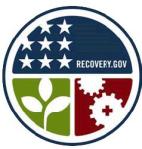The White House sponsored a forum last week of about 50 corporate executives to seek insights about how to  successfully transform large organizations. These included the leaders of Facebook, Southwest Airlines, Microsoft, and Whirlpool. Listening to the videos, it was quite reminiscent of a similar forum, sponsored by Vice President Gore’s reinventing government initiative almost 17 years ago. While the participants were different, much of the challenges, and the advice, are still the same!
successfully transform large organizations. These included the leaders of Facebook, Southwest Airlines, Microsoft, and Whirlpool. Listening to the videos, it was quite reminiscent of a similar forum, sponsored by Vice President Gore’s reinventing government initiative almost 17 years ago. While the participants were different, much of the challenges, and the advice, are still the same!
White House Forum on Modernizing Government (January 14, 2010). The forum, held at the White House, was organized around three themes: streamlining operations, transforming customer service, and maximizing the return-on-investment from technology. The forum broke into five work groups to ensure an interactive dialogue. Each of the work groups was chaired by a deputy secretary. At the end, each group came back to the main room with a summary of key points.
Here are video links to each of the five breakout groups:
- Breakout Session: Transforming Customer Service 1
- Breakout Session: Transforming Customer Service 2
- Breakout Session: Transforming Streamling Operations 1
- Breakout Session: Streamling Operations 2
- Breakout Session: Maximizing Technology Return on Investment
The final summary session, lasting 30 minutes, was concluded by chief performance officer Jeff Zients, who said there would be four “next steps:”
- The best ideas from the forum would be posted on the White House site and anyone could comment or expand on them.
- OMB would issue a report summarizing key findings and develop an implementation plan by February 15, with a timeline, milestones, key challenges and ownership of initiatives
- OMB would provide implementation assistance, including informal networks with the forum participants
- Each of the 50 or so forum participants would be called for individual de-briefs on their advice and insights.
White House blogger Jesse Lee did a good job of summarizing the 22 key points. One that sounded like a direct lift from reinvention was: “Engage managers in customer service. Require executives to put themselves in customer shoes by calling into call centers as customers, taking customer service calls directly, and consistently signaling that they pay attention to customer feedback.”
Summit on Reinventing Government (June 25, 1993). Vice President Al Gore led a day-long summit at Congress Hall, in Philadelphia, PA, on “Creating a Government That Works” to examine ways to make government work better and cost less. Its purpose was to examine how the federal government could learn from cutting-edge businesses and state and local governments that have incorporated innovative ways of improving their operations. These included leaders of General Electric, Motorola, and Harley-Davidson. Afterwards, Gore identified several key approaches to transformation and six take-away lessons:
How do we change culture? Part of it lies in liberating agencies from the cumbersome burden of over-regulation and central control. Part of it hinges on creating new incentives to accomplish more through competition and customer choice. And part of it depends on shifting the focus of control: empowering employees to use their judgment; supporting them with the tools and training they need; and holding them accountable for producing results.
Following are six steps, identified by participants in the Philadelphia Summit:
- First, we must give decisionmaking power to those who do the work, pruning layer upon layer of managerial overgrowth.
- Second, we must hold every organization and individual accountable for clearly understood, feasible outcomes. Accountability for results will replace “command and control” as the way we manage government.
- Third, we must give federal employees better tools for the job–the training to handle their own work and to make decisions cooperatively, good information, and the skills to take advantage of modern computer and telecommunications technologies.
- Fourth, we must make federal offices a better place to work. Flexibility must extend not only to the definition of job tasks but also to those workplace rules and conditions that still convey the message that workers aren’t trusted.
- Fifth, labor and management must forge a new partnership. Government must learn a lesson from business: Change will never happen unless unions and employers work together.
- Sixth, we must offer top-down support for bottom-up decisionmaking. Large private corporations that have answered the call for quality have succeeded only with the full backing of top management.











 experience I had in 1980 while working for a congressional oversight committee. We had received an annual report with program data for FY 1977 that I thought was quite useful. I then asked the agency for the FY 1978 and 1979 reports since I thought they would be useful as well. The response was “we just released the 1977 report, the others won’t be available for another two years.”
experience I had in 1980 while working for a congressional oversight committee. We had received an annual report with program data for FY 1977 that I thought was quite useful. I then asked the agency for the FY 1978 and 1979 reports since I thought they would be useful as well. The response was “we just released the 1977 report, the others won’t be available for another two years.”